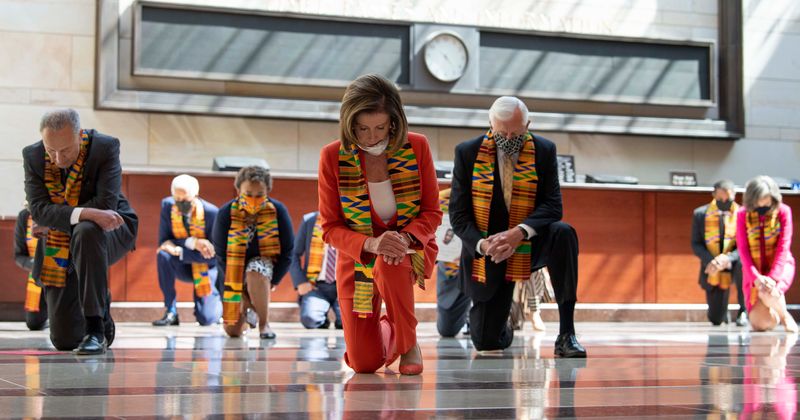As a student and teacher in the counter-cult movement for many years, I have both studied and taught how new faith-systems spawn from infancy and grow into full-fledged organized religions. It is my assessment, in no uncertain terms, that what America is witnessing is the birth of a new religion that will dwarf all other forms of religion in just a decade.
The traditional, prominent faiths of the United States – Protestant evangelicalism and Roman Catholicism – will soon be replaced by an altogether new religion that we are watching be born before our eyes. It is my belief that the rallies and protests we are seeing happen in our major cities are in fact religious gatherings.
If Christians are to survive in America, we must as soon as possible properly and accurately classify the “social justice” movement as a religion so as to receive the protections afforded us in the establishment clause of the U.S. Constitution. If not, we will soon find ourselves the victims of a state-sanctioned religion that uses its power of bigotry against our more traditional Christian faith.
Sub-Christian sects such as the Jehovah’s Witnesses, Mormons, Christian Science, and Black Hebrew Israelites follow the same path of development as non-Christian cults like Scientology. While these faith systems might technically be classified as religions, their formation and growth is observable and quantifiable science. In short, all new religions develop in the same sociological pattern and have predictable and similar characteristics.
While the new American religion may not have an official name, it might be called the Religion of Wokeness, Social Religion, or Social Justice. Its more pseudo-Christian manifestations might be called the Popularity Gospel. Its name, like the religion itself, is in development. For the purpose of this article, it will be called the Religion of Wokeness.
DEVELOPING RELIGIOUS MOVEMENTS RARELY SELF-IDENTIFY AS NEW RELIGIONS
Cults rarely self-identify as religions during their early development. In fact, the vast majority of religions known in the world today at first vehemently rejected claims that they were religions before ultimately embracing systemized modifications that would institutionalize their faith. For example, L. Ron Hubbard, the founder of Scientology, famously claimed that his teachings were a branch of psychology and science and not a religion at all, but now the cult enjoys recognition as a religion with the Internal Revenue Service. Jehovah’s Witnesses, originally known as members of the Watchtower Society, denied being an organized religion from their founding in the 1880s until 1954 when the question had to be settled in a Scottish court regarding a conscientious objector to war. Even early Christians were viewed largely as adherents to Judaism with peculiar beliefs about the Messiah and not as a distinct religion until the siege of Jerusalem in 70AD.
But if largescale spiritual movements are slow to categorize themselves as religions, small cult groups are especially slow to do so. Jim Jones’ People’s Temple claimed his teachings did not constitute a new religion, as did David Koresh’s Branch Davidians who only spoke negatively of “organized religion” and the “religious establishment.” The Rajneeshees sex-cult that took over a county in Oregon in the 1980s vehemently denied being a religion and instead advertised themselves as a “lifestyle philosophy of shared community values.”
Large religious movements in the Restorationist period beginning in the 1840s typically eschewed the title “religion” as they branded themselves only as having or restoring a proper understanding of already-established religions. The Mormons, for example, claimed only to be a restoration of the Melchezidekian priesthood lost sometime after the first century, trying to tie their faith to that of the earliest church.
Other large religions, like Buddhism and Taoism, reject the title of “religion” altogether, instead claiming to be a philosophy or discipline. Rarely, if ever, does a new religion begin by calling itself a religion.
COMMON CHARACTERISTICS OF RELIGIONS
There are common characteristics of most religions. Not all religions share all of these characteristics, but virtually all religions share most of these characteristics.
These characteristics of “religion” include sacred literature, identifying doctrine, strong opposition to the cultural status quo, characterization of non-adherents as lost, damned, or evil, acts of worship that include singing, prostration (kneeling), or chanting, fervent proselyting and public demonstrations of worship, some form of confession and penance, and a Messiah figure or figures – usually martyrs – who are elevated as either saints or saviors.
SACRED LITERATURE
Jews have the Torah. Christians added the New Testament. Muslims have the Quran. Mormons have the Book of Mormon, the Pearl of Great Price, and Doctrine and Covenants. Jehovah’s Witnesses have the Watchtower publication. Scientologists have the works and writings of Hubbard. Even the Rajneesh have their “Bible,” a collection of writings from Osho. Freemasons have their secret manuals. Hindus have the Vedas. Buddhists have the Tao Te Ching and Sutras.
The Religion of Wokeness has several sacred books that have produced the ideological foundation of the movement. Although the Communist Manifesto casts a large shadow across the movement, its preeminent sacred Text is Critical Race Theory, a 2001 book written by Jean Stefancic and Richard Delgado. The book lays out the dogma of Woke Religion and the central religious tenets of cultural and ethnic division.
There is a whole cast of Woke prophets whose apostolic writings serve as Sacred Writ for the movement including Kimberle’ Williams Crenshaw, Cheryl Harris, Gloria Ladsen-Billings, Karen Pyke, and Camara Phyllis Jones. Supporting religious texts are provided by Saul Alinsky, Gustavo Guttierez, James Cone, and Oscar Romero.
The writings of these Woke Apostles, which provide the written canon of Woke theology, have found their way into conservative evangelical seminaries and have wholly taken over, for example, Southern Baptist Theological Seminary and Southeastern Baptist Theological Seminary, which both claim that their religious doctrines can help serve as “analytical tools” for better understanding culture and the Holy Bible.
IDENTIFYING DOCTRINES
All religions have easily-identifiable doctrines – or teachings – that are distinct from other faith traditions. Christians, for example, will repeat terms like propitiation, justification, or substitutionary atonement. Mormons will speak of eternal progression.
More specifically, religions systemize their theology into easy-to-understand doctrines. Calvinists, for example, use the acronym TULIP to explain their view of Christian soteriology.
Wokeness Religion also has an acronym, albeit an unfortunate one. Their acronym is DIE and stands for diversity, inclusion, and equity. These are the highest and loftiest goals for a Woke religionist to obtain. DIE is the equivalent of Christians achieving sanctification or Buddhists completing the discipline of Anatta.

To accomplish diversity, inclusion, and equity (DIE), the Religion of Wokeness promotes its core doctrines. Doctrinal terms include “whiteness,” “intersectionality,” “white privilege,” “micro-aggression,” and “systemic racism.” In the Religion of Wokeness, these terms have been assigned their own unique meaning by their apostolic writers (named above) and find their way into the religion’s literature and advertising.
CHARACTERIZING NON-ADHERENTS AS DAMNED
Most religions characterize non-adherents as damned. Christians believe in the exclusivity of Christ. Mormons, who do not believe in hell, believe that only Mormons will obtain the third level of Heaven. Muslims refer to non-adherents as infidels, worthy of death.

Few religions, however, demonize non-adherents as harshly as Woke Religionists. Those who do not chant their chants, repeat their slogans, speak from their lexicon, or march in their parades are deemed to be racists, bigots, and prejudiced. And for the Woke Religionists, it is not enough that people not oppose them…they must be with them or else.
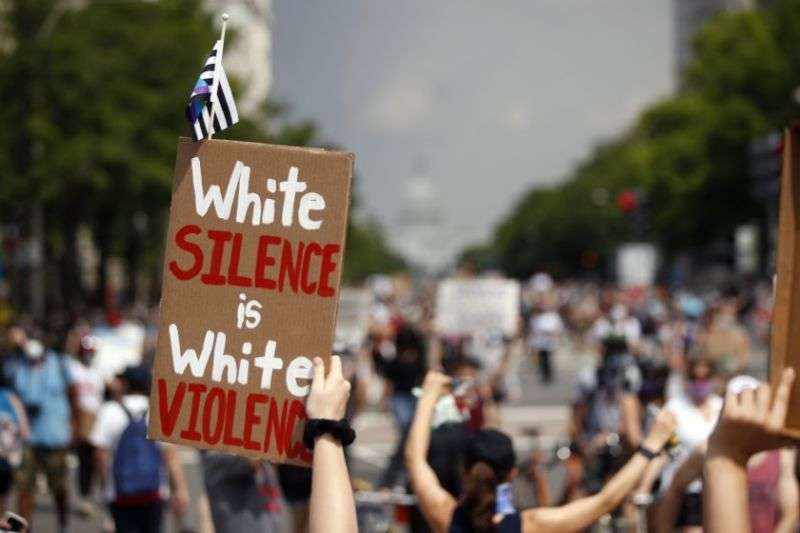
The Religion of Wokeness may very well be the most persecutory religion, if not in history, then certainly during the 21st Century. The goal of Woke Religionists is to hunt down, find out, and unveil everyone who will not be converted and see to it that they are fired from their job, ostracized from their communities, and scorned publicly. Not even radical Islam takes such a harsh approach toward those who refuse to be converted. On a daily basis, Woke Religionists spend an inordinate amount of their time lifting up non-adherents to scorn, characterizing them as dangerous, and begging for punitive legal, financial, and societal consequences against them. Many innocent people feel it necessary to march along with the Woke Religionists (whether literally or figuratively) just to not be targeted for their sin of non-conformity.
A part of this ‘others are damned’ conviction is the tendency toward iconoclasm, the intolerance toward images or symbols that aren’t approved by the religion. Among Christians, this is seen in Protestants who disapprove of Catholic icons or Catholics who historically have destroyed Islamic sculptures. In the Religion of Wokeness, the tendency toward iconoclasm is more violent than at any time since the Crusades. As a part of their religious zeal, they have violently and criminally taken down any statue or flag they believe is contrary to their religion, even if on public or private property belonging to others.

ACTS OF WORSHIP THAT INCLUDE SINGING, CHANTING, BOWING OR KNEELING
Purely philosophical movements or purely social movements do not include worship as a defining characteristic. However, all religious movements include the traditional components of worship including singing, chanting, bowing, or kneeling.

Christians sing corporate songs of worship. Catholics often kneel for communion. Muslims bow to Mecca. Ancient Christians in the East eerily chanted. These are all religious acts of worship.

Woke Religionists are engaging in these acts regularly. They can be seen bowing before their woke leaders, as Caucasians in the religion have been placing their faces on the ground before the feet of their black counterparts. Meanwhile, black adherents to the movement can be seen bowing before the police. Corporations that feel forced to affirm the religion defend the rights of protestors to bow at inopportune times as though it were religious liberty.

Mass religious services, which are sometimes called “protests” but often fit the qualifications of a riot, include singing and chanting slogans and phrases that hearken back to Woke doctrines and using slogans that convey those doctrines. In fact, Woke Religion’s public gatherings include singing as frequently as Christians sing in church. You won’t find a protest without it.
CONFESSION AND PENANCE
Religions almost universally have a system of confession and penance. Catholicism has the confessional booth and priest-mandated penance. Scientology has “auditing.” Islam has the citation of the Shahadah. Orthodox Christianity requires an initial public profession of faith upon conversion – centered upon the act of baptism – in which confession of sin and status as a sinner is acknowledged, along with professed trust in the accomplished work of Christ for forgiveness.
The Religion of Wokeness includes confession also. Chiefly, those who are not of ethnic minority status need to publicly confess and denounce their “white privilege,” a concept invented by the Woke Religion apostles mentioned above.
White Privilege is the Woke Religion’s equivalent of Original Sin, the Christian teaching that we are born with the sin-guilt inherited from Adam. Although Christianity teaches that by faith we lose whatever guilt or shame we have inherited through Adam, Woke theology insists that all white people have guilt on account of being white because they have inherited certain privileges that people of color do not enjoy. Because whites have privileges that their ancestors stole from the ancestors of slaves, they reason, white people today must apologize for those privileges.
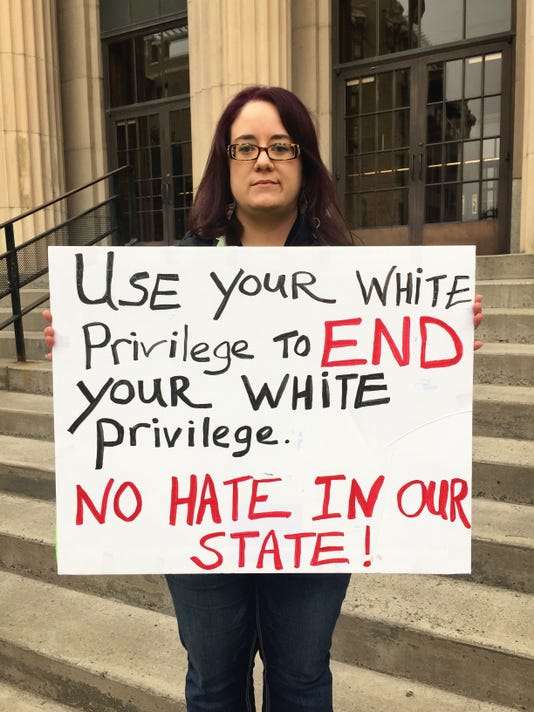
To properly atone for your white privilege, or pay penance, you must use your white privilege to help end it. This means electing politicians who will promote universal basic income (UBI), an increased minimum wage, a budget-busting welfare state, and mandated affirmative action to support ethnic minorities, women, students, the poor, and sexual deviants.
The penance paid for white guilt is not to remove slavery, but reverse it. In short, getting rid of all privilege (wealth, property, or opportunities) is not enough to atone for the sin. Privilege must be transferred from oppressor groups (white, heterosexual males) to oppressed groups (basically everyone else).
Transferring wealth, property, opportunity, and power to the “underprivileged” is the price of salvation in the Religion of Wokeness.
A Messiah-Figure, Usually a Martyr, Who is Extolled as Savior
Most religions have a messiah-figure who is extolled as a savior or, at the very least, an extolled high prophet. And most of the time, that messiah-figure is a martyr, dying for their cause.
The clearest example of this is in Christianity, in which our Messiah-figure is literally the Jewish Messiah who died on the cross for our sins. But other religions have these figures as well.
Islam has Muhammad, Mormonism has Joseph Smith, the Jehovah’s Witnesses have Charles Taze Russell, Buddhists have Buddha, the Branch Davidians had David Koresh, and the Rajneesh have Osho. Although not all messiah-figures are murdered, most are characterized by suffering.
Within these religions, no contrary opinions about the messiahs can be tolerated. Mormons cannot discuss Joseph Smith’s suspect moral character and prophetic failures. Muslims cannot discuss Muhammad’s pedophilia. The Davidians could not complain about Koresh’s child brides.
The Religion of Wokeness also has its messiahs. Dr. Martin Luther King enjoys the highest status of sainthood among them, and his history as a sex-trafficker, adulterer, and homosexual cannot be discussed without being excommunicated from the religion for blasphemy. A number of lesser saints also enjoy religious worship, including Trayvon Martin, Michael Brown, George Floyd, Eric Garner, Tamir Rice, Sandra Bland, or Philando Castile.
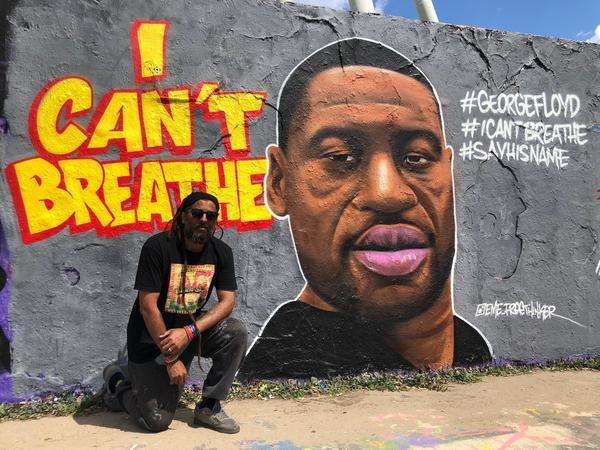
These individuals, who range from law-abiding citizens to violent criminals who were killed while attacking police or resisting arrest, are the de facto saints of Woke Religion. Their names are set-aside as holy and sacred, their memories as sacrosanct, their testimonies as infallible.
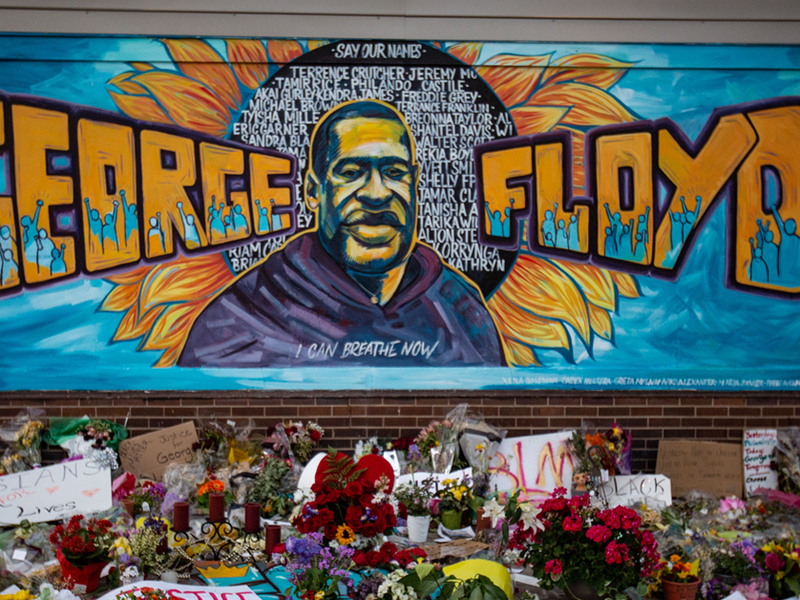
Today, people are lifting up the image of George Floyd like an icon of holiness. Few feel the courage to point out that he was a felon with a violent criminal past, a pornographer, engaged consistently in criminal behavior, and died with enough drugs in his system to kill a horse. He is, nonetheless, holy — in a religious sense — to Woke Religionists. To point out his character is blasphemy of the highest order and deserving of full ex-communication.
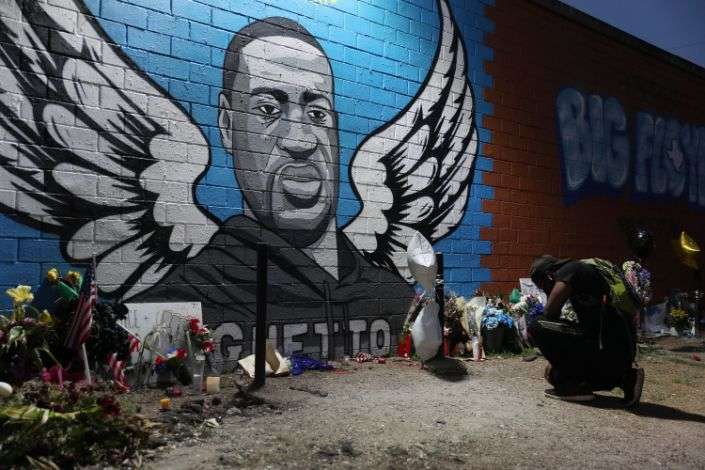
Even Floyd’s name is held sacred, with religious observers demanding people “say his name” and yet not dare misuse it. The transition of Wokeness as a social movement into a religion is so complete they have even co-opted the Judeo-Christian Third Commandment, “Thou shalt not take my name in vain.”

CHRISTIANS ARE CONVERTING TO WOKE RELIGION EN MASSE
For the last three months, most evangelical leaders have refused to open their doors for worship. Claiming that gathering publicly would hurt their Christian witness, violate Romans 13, and be unloving to their neighbor, their doors have remained shut (many of them until this very day).
And yet, evangelical leaders like Ed Stetzer, David Platt, and Ron Burns (also known as “Thabiti Anyabwile”) have all refused to open their doors to worship Jesus. Yet still, all of them organized religious gatherings for the church of Wokeness. They marched and organized mass gatherings to “protest” (worship) rather than opening their Protestant church doors for Christ.

What could possibly be a reason for refusing to have church services but still meeting in mass gatherings for Wokeness? There is only one plausible answer. They have converted from Christianity in the embrace of the Popularity Gospel.
The Religion of Wokeness is not compatible with Christianity. It has its own doctrines, own worship, own ordinances (chiefly, protest and virtue-signaling), and own messiah-figures. It has its own, competing version of confession, repentance, and atonement.
True Christians need to reject Wokeness – and the high priests of Wokeness – as fierce opposition to the Lordship of Christ and true religion.
“No one can serve two masters, for either he will hate the one and love the other, or he will be devoted to the one and despise the other…(Matthew 6:24).

